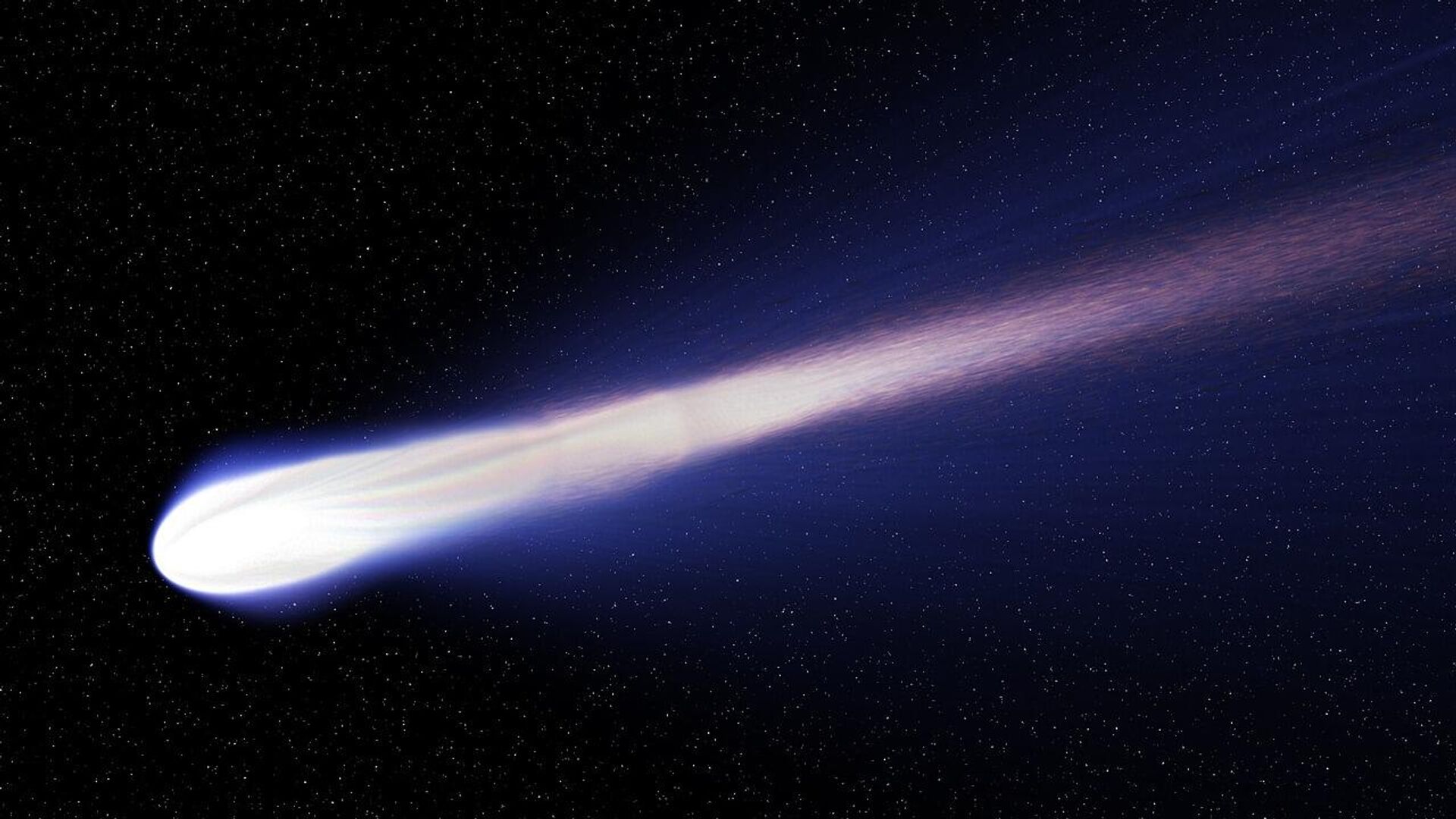https://sputnikglobe.com/20210930/huge-comet-larger-than-phobos-hurling-towards-heart-of-our-solar-system-1089555871.html
Huge Comet 'Larger Than Phobos' Hurling Towards Heart of Our Solar System
Huge Comet 'Larger Than Phobos' Hurling Towards Heart of Our Solar System
Sputnik International
With its width currently estimated at about 93 miles (150 kilometres), the comet is approximately seven times bigger than one of Mars' moons. 30.09.2021, Sputnik International
2021-09-30T18:18+0000
2021-09-30T18:18+0000
2021-09-30T18:18+0000
science & tech
sun
saturn
comet
approach
https://cdn1.img.sputnikglobe.com/img/07e5/09/1e/1089556967_0:0:1280:720_1920x0_80_0_0_fc74a96da333dc3209dce4a3ba8d1812.jpg
A humongous space object that emerged from somewhere in space is slowly but surely making its way towards the core of our solar system, though luckily it's not expected to actually reach the vicinity of Earth.The space rock, known as the Bernardinelli-Bernstein Comet and officially designated C/2014 UN271, is expected to make its closest approach to our planet in 2031 when it's expected to “brush” Saturn's orbit, Newsweek notes.As the outlet points out, while the average diameter of comets is about six miles (10km), the Bernardinelli-Bernstein is estimated to be 93 miles (150 kilometres) wide, making it one of the largest comets ever discovered, around seven times bigger than Phobos, one of the moons of Mars.Originally spotted in 2014 by astronomers Pedro Bernardinelli and Gary Bernstein (hence its name) who used images from the Dark Energy Survey, C/2014 UN271 was only confirmed as a new discovery in June 2021 by the Minor Planet Centre in Cambridge, Massachusetts.The comet supposedly hails from the collection of icy bodies on the outskirts of our solar system, known as the Oort cloud.
Sputnik International
feedback@sputniknews.com
+74956456601
MIA „Rossiya Segodnya“
2021
News
en_EN
Sputnik International
feedback@sputniknews.com
+74956456601
MIA „Rossiya Segodnya“
Sputnik International
feedback@sputniknews.com
+74956456601
MIA „Rossiya Segodnya“
science & tech, sun, saturn, comet, approach
science & tech, sun, saturn, comet, approach
Huge Comet 'Larger Than Phobos' Hurling Towards Heart of Our Solar System
With its width currently estimated at about 93 miles (150 kilometres), the comet is approximately seven times bigger than one of Mars' moons.
A humongous space object that emerged from somewhere in space is slowly but surely making its way towards the core of our solar system, though luckily it's not expected to actually reach the vicinity of Earth.
The space rock, known as the Bernardinelli-Bernstein Comet and officially designated C/2014 UN271, is expected to make its closest approach to our planet in 2031 when it's expected to “brush” Saturn's orbit, Newsweek notes.
As the outlet points out, while the average diameter of comets is about six miles (10km), the Bernardinelli-Bernstein is estimated to be 93 miles (150 kilometres) wide, making it one of the largest comets ever discovered, around seven times bigger than Phobos, one of the moons of Mars.
Originally spotted in 2014 by astronomers Pedro Bernardinelli and Gary Bernstein (hence its name) who used images from the Dark Energy Survey, C/2014 UN271 was only confirmed as a new discovery in June 2021 by the Minor Planet Centre in Cambridge, Massachusetts.
The comet supposedly hails from the collection of icy bodies on the outskirts of our solar system, known as the Oort cloud.

